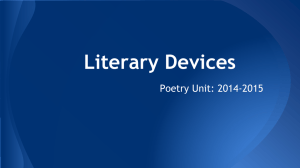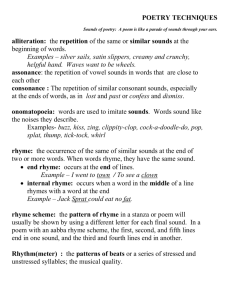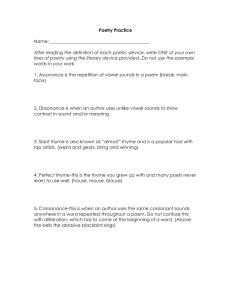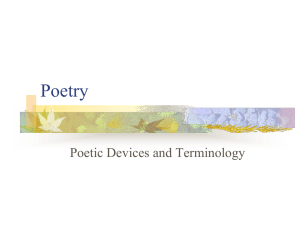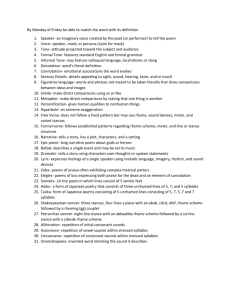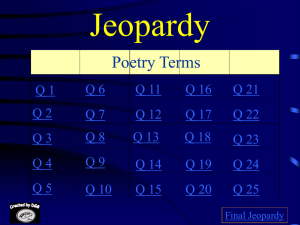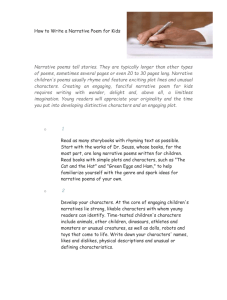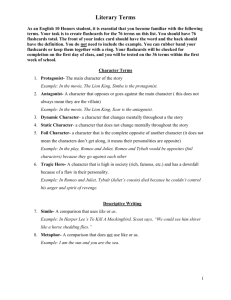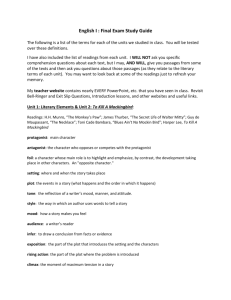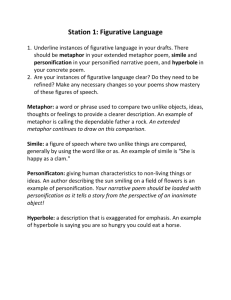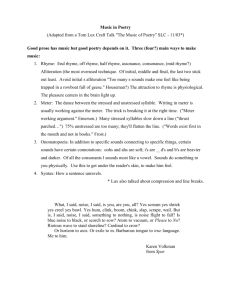Poetry Terminology
advertisement
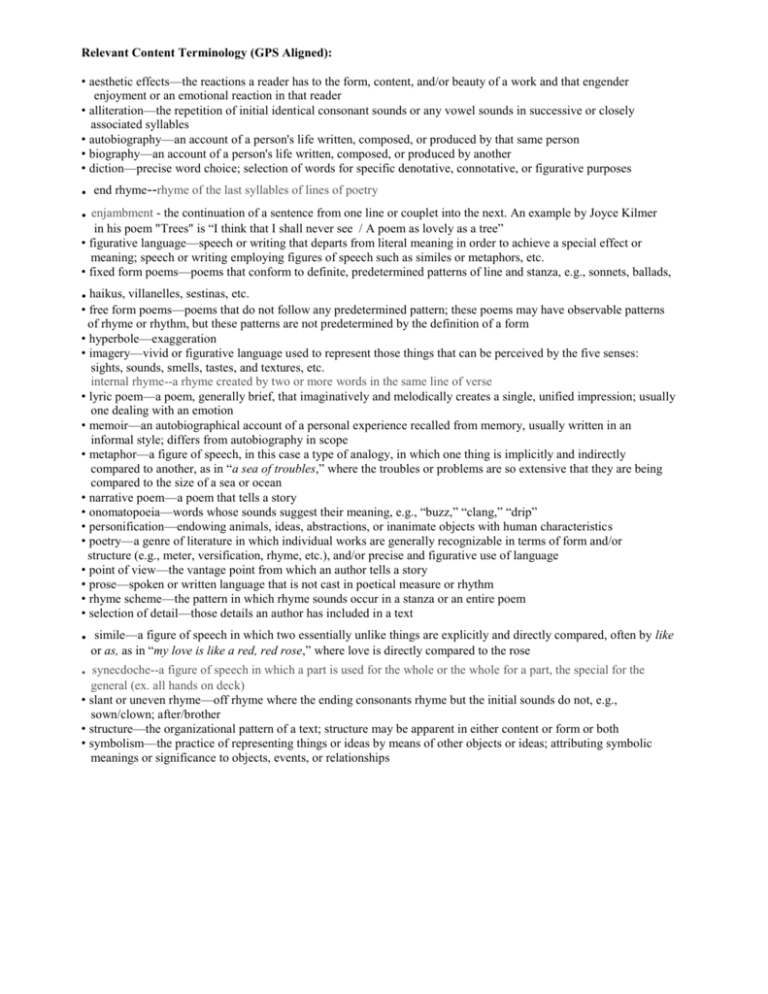
Relevant Content Terminology (GPS Aligned): • aesthetic effects—the reactions a reader has to the form, content, and/or beauty of a work and that engender enjoyment or an emotional reaction in that reader • alliteration—the repetition of initial identical consonant sounds or any vowel sounds in successive or closely associated syllables • autobiography—an account of a person's life written, composed, or produced by that same person • biography—an account of a person's life written, composed, or produced by another • diction—precise word choice; selection of words for specific denotative, connotative, or figurative purposes . end rhyme--rhyme of the last syllables of lines of poetry . enjambment - the continuation of a sentence from one line or couplet into the next. An example by Joyce Kilmer in his poem "Trees" is “I think that I shall never see / A poem as lovely as a tree” • figurative language—speech or writing that departs from literal meaning in order to achieve a special effect or meaning; speech or writing employing figures of speech such as similes or metaphors, etc. • fixed form poems—poems that conform to definite, predetermined patterns of line and stanza, e.g., sonnets, ballads, . haikus, villanelles, sestinas, etc. • free form poems—poems that do not follow any predetermined pattern; these poems may have observable patterns of rhyme or rhythm, but these patterns are not predetermined by the definition of a form • hyperbole—exaggeration • imagery—vivid or figurative language used to represent those things that can be perceived by the five senses: sights, sounds, smells, tastes, and textures, etc. internal rhyme--a rhyme created by two or more words in the same line of verse • lyric poem—a poem, generally brief, that imaginatively and melodically creates a single, unified impression; usually one dealing with an emotion • memoir—an autobiographical account of a personal experience recalled from memory, usually written in an informal style; differs from autobiography in scope • metaphor—a figure of speech, in this case a type of analogy, in which one thing is implicitly and indirectly compared to another, as in “a sea of troubles,” where the troubles or problems are so extensive that they are being compared to the size of a sea or ocean • narrative poem—a poem that tells a story • onomatopoeia—words whose sounds suggest their meaning, e.g., “buzz,” “clang,” “drip” • personification—endowing animals, ideas, abstractions, or inanimate objects with human characteristics • poetry—a genre of literature in which individual works are generally recognizable in terms of form and/or structure (e.g., meter, versification, rhyme, etc.), and/or precise and figurative use of language • point of view—the vantage point from which an author tells a story • prose—spoken or written language that is not cast in poetical measure or rhythm • rhyme scheme—the pattern in which rhyme sounds occur in a stanza or an entire poem • selection of detail—those details an author has included in a text . . simile—a figure of speech in which two essentially unlike things are explicitly and directly compared, often by like or as, as in “my love is like a red, red rose,” where love is directly compared to the rose synecdoche--a figure of speech in which a part is used for the whole or the whole for a part, the special for the general (ex. all hands on deck) • slant or uneven rhyme—off rhyme where the ending consonants rhyme but the initial sounds do not, e.g., sown/clown; after/brother • structure—the organizational pattern of a text; structure may be apparent in either content or form or both • symbolism—the practice of representing things or ideas by means of other objects or ideas; attributing symbolic meanings or significance to objects, events, or relationships
